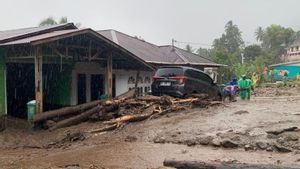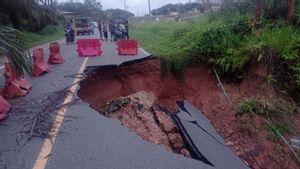JAKARTA - In the next decade, NASA is targeting the Planet Venus again as a mission to explore its atmosphere with a spherical robot equipped with five instruments.
The soccer robot is dubbed the Deep Atmosphere Venus Investigation of Noble gas, Chemistry, and Imaging (DAVINCI) mission and is equipped with the Venus Atmospheric Structure Investigation (VASI) instrument.
VASI will be installed on the DAVINCI ball robot to plunge through the atmosphere of Venus, then it will record how the planet's atmosphere for 63 minutes then falls to the surface.
It doesn't stop there, VASI will also collect data on the temperature, pressure, speed and direction of the wind on Venus. All that data will answer various scientific questions that have been a mystery.
There is actually some big puzzle about the atmosphere in Venus. We don't have all those puzzle pieces and DAVINCI will give us those pieces by measuring composition at the same time as pressure and temperature as we approach the surface," said the science lead for the VASI instrument, Ralph Lorenz.
With the data that VASI brings, the researchers want to know how the surface interacts with the atmosphere, and whether the volcano observed on Venus interacts with the atmosphere in the past.
Understanding the planet's volcanism history is very important to know if the planet is habitable.
The long-term habitability of our planet, as we understand it, relies on the incorporation of interior and atmosphere. The long-term abundance of carbon dioxide in our atmosphere, which we really rely on to keep the earth's surface warm enough to inhabit," Lorenz said.
However, this mission is not without obstacles. It is claimed, the atmosphere of Venus is filled with sulfate acid which can cause severe damage to the DAVINCI robot.
Overcoming this, VASI will collect data using temperature sensors wrapped in metal tubes such as straws to protect them from the atmosphere, and atmospheric sensors using silicon membranes stretched over the vacuum to detect pressure-induced distortions.
Other sensors in VASI include accelerometers and gyroscopes used to measure the wind, which will be stored safely inside a thick robot. Thus quoted from Digital Trends, Monday, October 24.
The English, Chinese, Japanese, Arabic, and French versions are automatically generated by the AI. So there may still be inaccuracies in translating, please always see Indonesian as our main language. (system supported by DigitalSiber.id)













